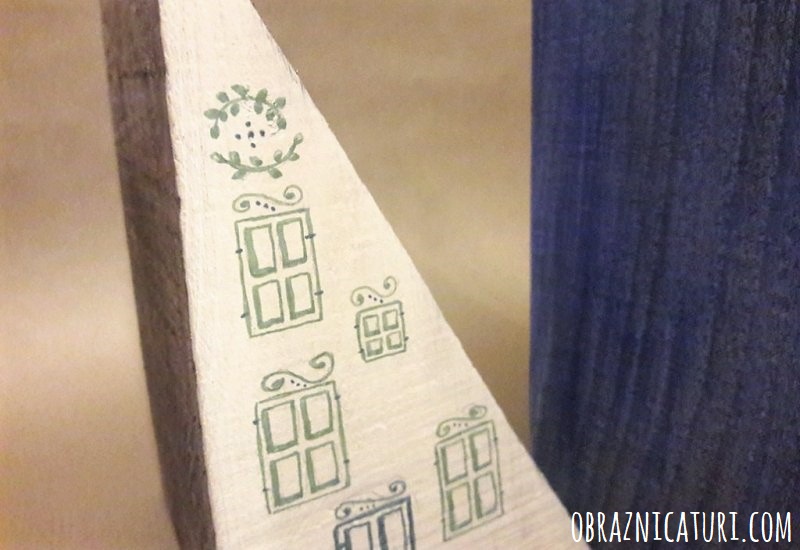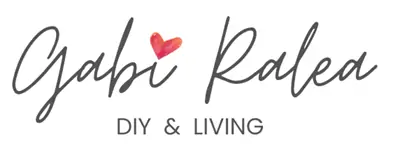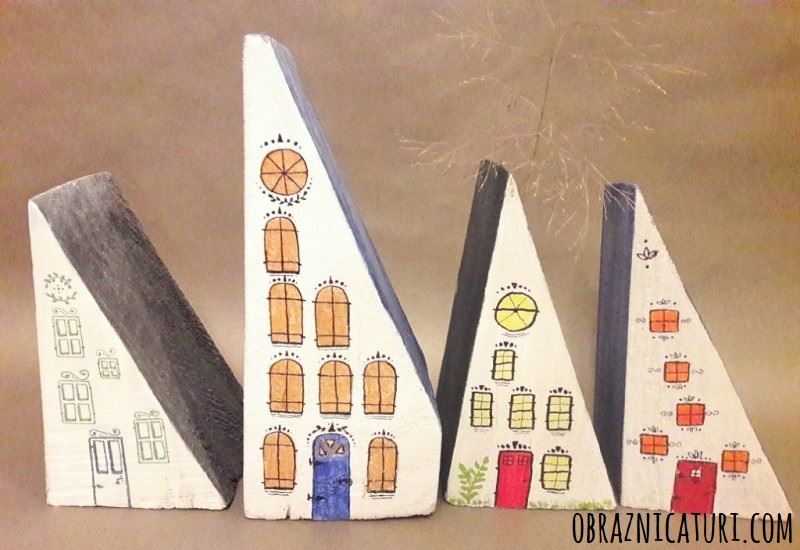I’ve had one of those “Ahhh… how did I miss it?” moments when I realized the potential of this project. I was standing out on the porch, at my parents-in-law, watching my husband choosing wood scraps for a barbeque. Two of the wood pieces were standing right on the edge of the box, and their profile imagined a skyline, as if an old village was sinking in the pile of wood. It was so obvious that I just couldn’t understand how did I miss that recycling resource from my DIY plans.
I grabbed the two wood pieces, and dug into the pile till I found another two. They were around 10-in high, like half-cube cut on diagonal, with sharp edges. Perfect for a roof. Perfect for an uncommon house. Perfect for a DIY block house.
Here’s how to do it!
What You Need
If you want to make your own block houses, you need pieces of wood that might look like houses, even if they wouldn’t be just regular houses. Let your imagination play, and imagine houses in different shapes and sizes, depending on what you have on hand.
Here’s what I got from the wood pile: 
How to Do It
1. Sanding
Start by sanding the wood pieces in order to make the surfaces and the edges smoother, but also to prepare them for painting. Clean them with the cloth dumped into rubbing alcohol, to get rid of the dust and dirt left after sanding. You can see now how beautiful de wood fiber is…which means that the paint will penetrate the wood scraps and cover them in color easily.
2. Painting
There are two ways to color them: you can paint in one light color as a base or primer first (use chalk paint at this stage), then use your final color, or you just can skip this step and go further with the desired colors (acrylic or chalk). I tried both ways, and there aren’t big differences in the results, but only in the length of the process.
So, I chose two colors for each block, one of them being white for the walls, while the roofing was blue, grey or black.
3. Adding Details
When the paint dried out, I was able to draw small windows, using orange, yellow or gold acrylic paint, and red and blue doors. You can even draw the windows and the doors using only ink pens, if you like, for a lighter design of your block houses. You can also play with shapes when comes to windows and doors, and use different decorative elements to picture old houses from different parts of the world. 

Choosing colors was not an easy job, and I even mixed them up, drawing grey doors with the house with green windows, but it was fine, in the end.
Talking about the end, your block houses could use a coat of transparent vernis to protect the colors from moisture and UV lights.
Do you like what you’re reading? Subscribe to stay up to date!
[mc4wp_form id=”604″]Repurposing Wooden Toys
When the block houses made from wood scraps what finished, I realized that I needed to keep up the creative fever so I found a smaller canvas when looking in my kid’s toy box. Some old wooden cubes were perfect for drawing new, smaller houses. All you need for doing the same is shown below, except the vernis you really need at the end, to prevent the ink from washing off or fading away.
First, you need to know that nature wooden cubes are much better for this project than the painted one, because the paint easily penetrates the fiber and won’t be wiped out by mistake. Here comes a downside with this quality, meaning that the ink pen has to be really thin or the line will look bulky and inappropriate for this design. Clean them with rubbing alcohol, let them dry, then start working on your project.
So, color the wooden block but leave some areas uncovered for the next step.



Finally Showing Off…
Once with a coat of vernis and dried, your block houses are ready to be displayed and admired. See the first house from the left: see the difference in color between the windows and the door? It wasn’t supposed to be like this, but I guess it was a good mistake in the end, wasn’t it?


I also love the small green house with red door…



















8 comments
Hello Gabi,
Your wooden houses look great.
I have also made some and posted them on my blog.
Maybe you have the time and desire to visit my blog.
Here are the two links:
http://mydiyol.blogspot.de/2017/12/christmas-2017-diy-weihnachtsdorf.html
http://mydiyol.blogspot.de/2017/12/diy-der-clou-vom-weihnachtsdorf.html
many greetings
Uwe
Uwe, your little houses are totally awesome! I love the traditional look, and how their edges are distressed. I also like the white – grey – black combination! I pinned them to my DIY Project board on Pinterest!
Happy New year Gabi <3 I love all your little wooden houses but if I had to choose it would probably be a toss up between the little round red house, it reminds me of one of those telephone kiosks that you see in London and the one where the windows and doors' colors look different. I love the way you've created shadows on the inside of the frames on that one.
Michelle, you are inspiring! I could also paint phone boothes.. thank you for the idea!
That house with mismatched colors is one of my favorites too. 🙂
So cute! Love these, pinned. Visiting from Sweet Inspiration party.
Thank you 🙂 I am happy you liked them and pinned 🙂
This is such a fun way to transform wood pieces Gabi. I also had done something similar but just painted them white. Your version is so much more fun and full of pretty details.
Thank you, Mary! 🙂 I think it just became my favorite project, and it provides so many possibilities and opportunities that I couldn’t imagine…